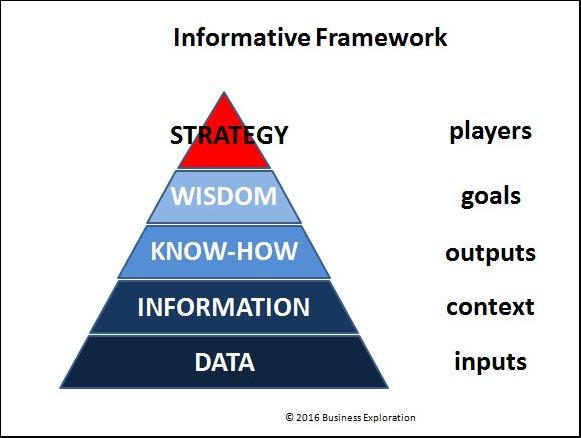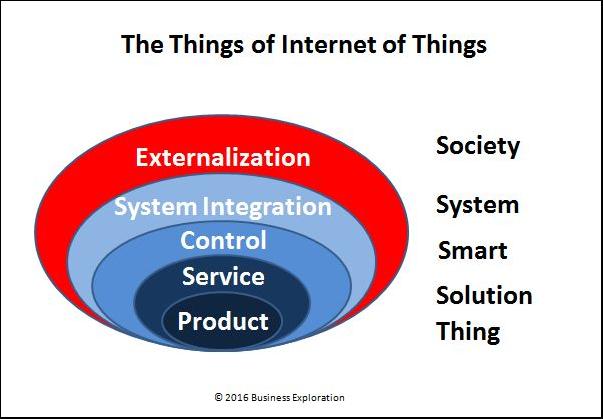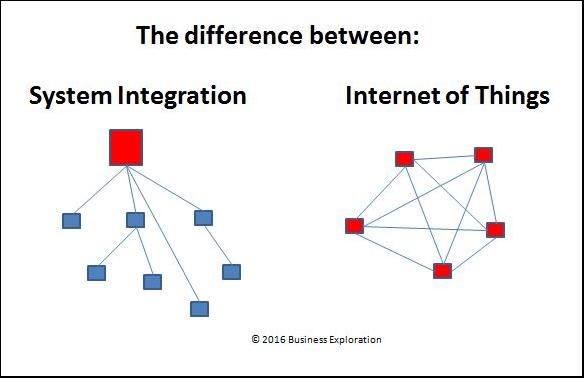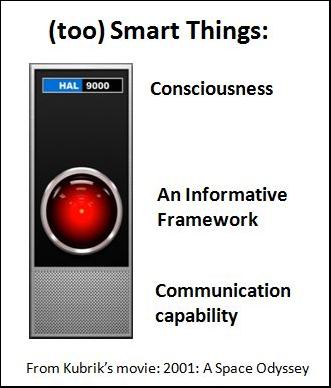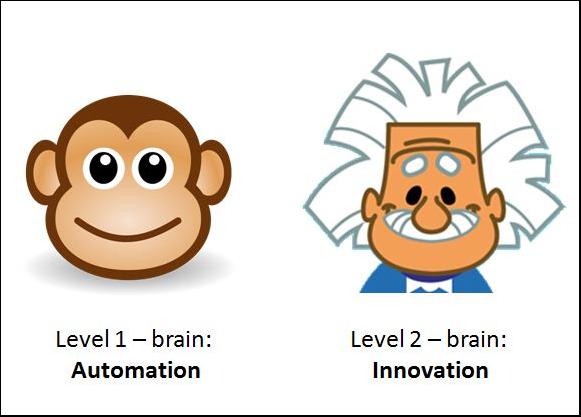
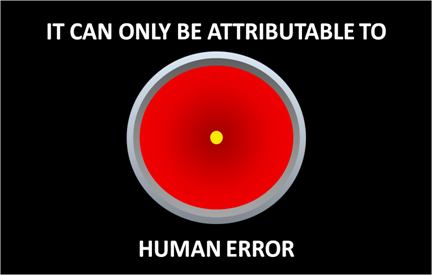
|
“IT CAN ONLY BE ATTRIBUTABLE TO…HUMAN ERROR”- IoT go to market |
|
“IT CAN ONLY BE ATTRIBUTABLE TO… HUMAN ERROR”- IoT go to market |
|
Dear Fellow Innovator, based on the comments I received by you on my latest booklet “Innovating on the internet of things era”, I have expanded it with a deeper chapter on Smart Things. Here it is, I hope to get your comments as usual, and if you want the new rev. 2 of the “Innovating on the internet of things era”, just download it here:
…For being “smart” this things are quite dumb…At the base of the Internet of Things there are “Smart Things”. Things that may take action on their own initiative, without human operator as mediator. This means that they can “decide”. They can: · decide (to perform a function) · undergo an external decision · influence an external decision To take a decision these Things need an informative framework that you may have already seen represented more or less like a pyramid starting with “data”:
When we think about this framework in today’s social digital era I prefer to add a layer that specifies how this framework can not be fully under control, because if the Things “interact”, then the “decisions” of the other players shall be taken into account. Also the way we think to “products” changes under the pressure of the social-digital context. IoT extends the product’s definition adding a strategic layer:The “extended product” described in any marketing book, can add as well a further layer of complexity that describes its capability to offer benefits to the customer, from the interaction with other entities. The “Product”, after being enriched with “Services”, becomes “Smart” when is capable to offer a degree of control over its “decisions” (performed functions). At this level a minimum of “intelligence” has been embedded, as a “processor” of any sort: from a I/O devices to a full electronic controller.
When at the “Smart” product we add connectivity, our solution can become part of a bigger system. The solution therefore is “the system”: an entity that can bring control of the product and embed its functions into the one of a larger solution. This is what the main OEMs (original equipment manufacturers ) tend to do when they start offering remote diagnostic, predictive maintenance and full remote operations. This is what is often referred as an “Internet of Things” approach, even if, to me, this is still just “playing at home”. The real “Internet of Things” begins when your product start to really interact with other entities, externalizing costs or sharing resources.
The best example to understand the difference, is the use of IoT to optimize the Energy Efficiency of a house. If the appliances in the house transfer their utilization parameters to the Utility and this optimizes the workload with the Energy Network capacity in order to use the power when the costs of the Utility are the lowest, this is just “System integration”. If the same appliances send the same parameters to 5 Utilities and then choose to be served by the one that offer the lower costs for the House Owner, this is “Internet Of Things”. A place where Things interacts “Strategically” to offer to the user the maximum benefit. I will be back later on this concept. What it takes to build a “Smart Thing”?Things perform a function even if they are not “smart”. So what it takes to make them smart? It takes: · Consciousness ( they shall be aware of themselves ) · Communication capability An Informative Framework ( we already talked about this ) ConsciousnessA Thing, to be conscious of itself, should: · Respond to a Name · Be aware of its status ( on/off, feeling good, operative…) · Be aware of its environment ( where it is in a space/time/network ) · Keep track of itself ( build up a memory ) Being conscious is not enough. “Smart” is an adjective that implies a judgement, and this can be achieved only by comparison with others. So a smart thing needs to communicate. CommunicationTo communicate a thing must be: · Connected · Transfer information ( back and forth ) · about its status (on/off…) · itself ( its functionality ) · its environment ( in the past, the present, the future) · “Transferring information” means “send” but also “receive”. (Many of the processors need an external storage and processing of their data, in order to save energy and complexity.) An informative frameworkI have already talked about this concept. Here I just want to go a bit in detail when I talk about: · Data: where they come from? · They can be input parameters: something written in the thing DNA. · Data can be acquired via self-sensor: sensors that are meant to collect information about the thing status. · Data can be acquired via own-sensors: sensors aimed at collecting data from the environment. · Data can be acquired via borrowed-sensors: data that are acquired via sensors that are not belonging to the thing. · · Information: they provide the context. Information are data that are: · Classified · Put in context ( they start to have a meaning when they relate to other data – semantically) · Transformed: data aggregations that produce further data – or “results” ·
· Knowledge: it’s about defining how functional outputs are performed. This can be achieved when a model is defined that can state a general solution, once a general problem is identified. It works via: · Universal physic’s laws · correlations, projections, analogies, habits et alike · accumulation, neural mapping · plain behavioral paths, strategic behavioral paths (those that implies interaction among multiple players) · · Wisdom: to be smart, you need a purpose: a goal.A smart thing need a clear: · Goal: a job-to-be done, affected by the outcome of the function it delivers · Criteria: tolerance criteria are necessary to accept Results. · · Strategy: finally a truly smart thing shall have a strategy. A strategy allows to accommodate the interaction of a smart thing with other entities on the same network. Without a strategy, a clear understanding of how the benefits of performing a function are shared among the owner of the thing and the owner of the other things on the network, is impossible. It’s not about collaborating: this is something that is solved by system integration. It’s not either about coordination: System integration can solve this either. It’s about cooperation: working to maximize all network’s players benefits. A lot of this strategy is about externalize costs and share resources. In other words it’s about to “delegate”. As a Thing, you wouldn’t delegate your own controlWhen a Thing starts cooperating with other Things on internet, it has two choices: · To delegate its control · To cooperate, keeping control To simply ”delegate” has huge risks. It implies that the controlling systems do so for the benefit of the Thing. IT assumes that all the shared information are transferred to the controlling systems that can use them at its will, in return of a greater Thing’s benefit. It assumes that no other parties can get access to the same information or take place of the controlling system without authorization. A “real” Thing of the Internet of Things instead, should keep the last word on its data, to protect its position. When you start cooperate over the internet, there is a bit more than simply “transact”: bargaining with the counterpart to close a deal. The cooperation is about to interact in the interest of itself and a community. In other words: in the Internet of Things world, a business model should always be proofed against the “Games’ Theory”. In a non-connected things’ world, the strategic level of interaction is solely deputed to the humans. In an Internet of Things world, where things act autonomously on humans’ behalf, a layer of strategic reasoning should be embedded in their logic. IoT is saving us “Level 1” brain’s work:This is especially true for those business models that offer as a benefit the one of saving “brain work”. Think for example to all those new domotic appliances, whose job is to help us avoid to remember to adjust room temperature, turn of or on lights, start appliances at the right timing to save energy costs and so like. All this Things help us avoid “Level 1” brain’s work. The “Level 1” is the instinctive one, the one that works by analogy and we activate without effort. It’s the one of routine tasks, like face recognition, movement detection, danger identification. The “Level 2” is much more energy hungry, difficult and heavy. Is the one that is capable to build logic steps, make math, plan, design and create.
When we use our level 1 brain, we take advantage of “automated routines” that help us save critical time and energy in managing our interaction with the external word. But we are also prone to big errors for using analogies when they are not appropriate, and introducing strong bias in our decision framework: · We tend to deal only with people that confirms our ideas · We tend to stick on the same group of people · We tend to rely more on the past experience than planning · We tend to build confirmation about our past actions · We tend to evaluate risks on weight and not on probability · We tend to evaluate more losses than gains · We tend to reward ourselves in the present than in future · We tend to reason by differences and not in absolute term Business models that leverage the Internet of Things to help us with our level 1 daily tasks, would probably try to take advantage in a systematic way of this cognitive bias, to lock in clients, apply pricing policies for their advantage, avoid evaluation of results or comparison with alternatives. In this context anonymity get paramount importance. IoT and control over relationships:A further element with paramount importance is the control of all the “relationships” that we use to perform delegated tasks. Our “natural dashboard”: the cortical brain, has been measured to be able to manage a maximum of around 255 relations. This is the size of the relations into a small tribe, a small business, a infantry company, where a person can relate with all the components. Bringing a “Smart Thing” on this natural dashboard could mean to reduce the number of human beings with whom we relate, or to use electronic extensions of our natural dashboard that can help us maintain control over a hierarchical system, again, externalizing part of our tasks and introducing further layers to our strategic position. Continue here:
|
|
Little nightly thoughts by Business Exploration® |
|
Read more about marketing innovation, ask our free booklets: here |

|
Puzzled by your Marketing Plan? |

|
Get our free booklet: Roadmap to Market
And discover our methodology
Satisfied or Reimbursed |
|
Our Newsletter reaches 2200 professionals in 47 nations, with the ambition to offer alternative points of view and a relax break to our readers. |



